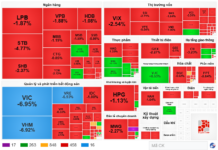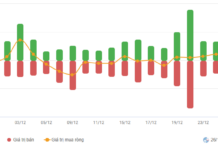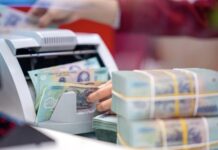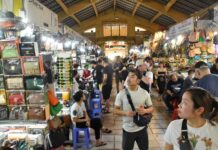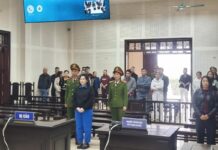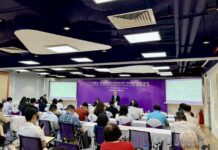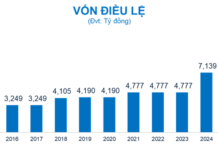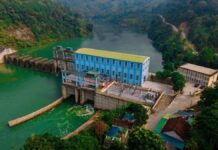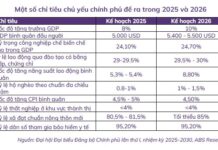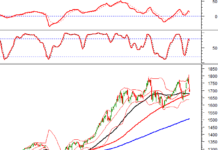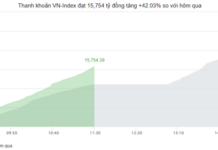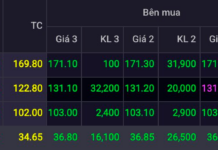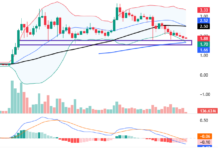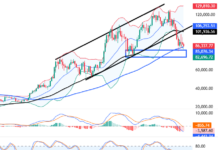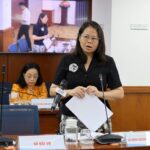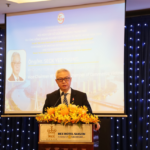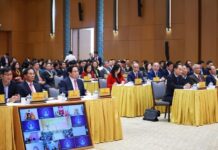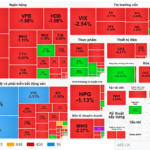Deputy Director of the Ho Chi Minh City Department of Science and Technology (DOST), Vo Minh Thanh, shared this information at the “International Seminar, Product Exhibition, Semiconductor Materials Industry, and Job Fair 2025.”
The seminar took place on the morning of October 30th in Ho Chi Minh City, organized by the Department of Science and Technology and the Saigon Hi-Tech Park (SHTP) Management Board.
Finding Momentum for the Semiconductor Hub
According to Vo Minh Thanh, Vietnam in general and Ho Chi Minh City in particular have significant advantages to participate more deeply in the global semiconductor industry supply chain. Notably, the potential rare earth reserves are estimated at around 20 million tons, a strategic raw material for producing semiconductors essential for high-tech industries in the US, Europe, Japan, and South Korea.
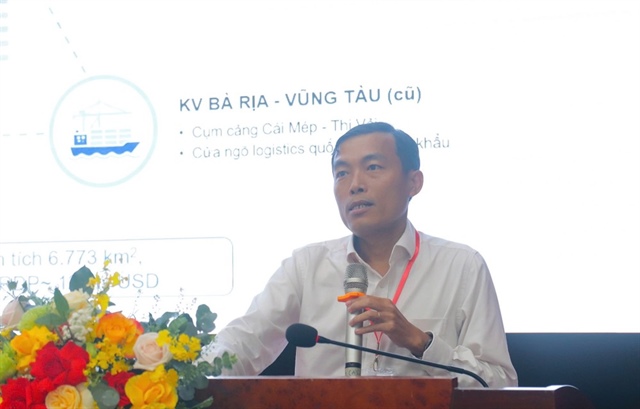 |
Specifically, after the merger, Ho Chi Minh City possesses immense potential to form a semiconductor industry development hub.
The former Ho Chi Minh City area will serve as the core for research and development (R&D) and high-quality workforce training. The former Binh Duong area, with its industrial strengths, will be the center for large-scale manufacturing and assembly. The former Ba Ria – Vung Tau area, with the Cai Mep – Thi Vai deep-water port cluster, will serve as the international logistics gateway, ensuring a smooth supply chain of materials, equipment, and product exports.
“This synergy creates a complete semiconductor ecosystem with superior regional competitiveness,” said Mr. Thanh.
In his role as the manager of the Hi-Tech Park—designated as the core of the “Semiconductor Industry Development Strategy to 2030, Vision to 2050″—Assoc. Prof. Dr. Le Quoc Cuong, Deputy Head of SHTP, affirmed that SHTP is oriented to become a “multi-sector technology hub” nationwide. This place is not only a research zone but also forms a complete ecosystem connecting the state, scientists, and businesses, helping research ideas quickly apply to reality.
To achieve this goal, Mr. Cuong believes that a high-quality workforce will play a pivotal role. “Without talented people, there can be no strong semiconductor industry,” said the Deputy Head of SHTP.
According to SHTP leadership, the unit is currently investing in expanding the Semiconductor Engineer Training Center, collaborating with universities and domestic and foreign enterprises to ensure students not only learn theory but also practice on real equipment and projects.
“We believe that with the right direction and the accompaniment of the Government and businesses, Vietnam can completely rise to become a new bright spot in Asia’s semiconductor technology industry,” Mr. Cuong affirmed.
Experts and managers also recognize that the state has issued many policies to promote the semiconductor industry. Notably, Resolution 57 of the Politburo; the Semiconductor Industry Development Strategy to 2030, Vision to 2050 issued by the Government, and especially the promulgation of the Digital Technology Industry Law.
These foundations have created a solid legal springboard with outstanding mechanisms and policies.
 |
Clear Goals Are Key to Development
According to Vo Minh Thanh, Ho Chi Minh City identifies the industry’s pioneering role with four main pillars. Specifically, the first and most critical pillar is developing a high-quality workforce. This includes policies to attract and utilize talents with breakthrough policies such as personal income tax incentives for 5 years.
The second pillar is perfecting the ecosystem, focusing on supporting industries and materials. The third pillar is enhancing research and development (R&D) to master core technologies. Finally, perfecting institutions and breakthrough investment incentive policies.
“However, Ho Chi Minh City must also frankly acknowledge that to break through, there are still significant challenges to be addressed,” said Deputy Director of DOST Vo Minh Thanh.
The DOST leader pointed out that the biggest challenge is the weak supply chain and supporting industries. Accordingly, most specialized materials, high-purity chemicals, industrial gases, and production equipment must be imported.
The number of domestic enterprises capable of participating in the supply chain of large FDI corporations is still very limited. This increases costs, prolongs time, and increases risks for production activities.
Secondly, although it is the largest training center in the country, the city still faces a gap between the quantity and quality of the workforce. Enterprises still need time to retrain engineers to meet the specific job requirements of the industry.
And thirdly, technical infrastructure, especially the supply of ultra-clean electricity and water, needs to be ensured at the highest stability to meet the requirements of manufacturing plants.
“Developing the semiconductor industry is a long journey. Therefore, Ho Chi Minh City determines to build a comprehensive strategy, not only looking at the final stages but focusing on building from the roots, from materials, R&D, workforce to creating high-value final products,” said Deputy Director of DOST Vo Minh Thanh.
Seeking Opportunities in the New Semiconductor Market
From an international management perspective, Dr. Tran Anh Minh, Vice President of Research at Nexus Photonics (USA), suggested that Vietnam could seek breakthrough opportunities in photonic chip technology instead of competing in traditional electronic chips.
According to him, the traditional electronic chip industry has developed for decades, shaping a solid supply chain, making it extremely difficult to enter. Meanwhile, the photonic chip industry is relatively young, with standards and ecosystems still forming. This is a golden opportunity for Vietnam to “leapfrog.”
Photonic chips are chips that use light particles (photons) to transmit and process information. These chips are commonly applied in telecommunications, new-generation displays for AR/VR glasses, autonomous vehicles like cars, drones, UAVs, and wearable medical devices. This is a crucial technology in the digital economy.
Therefore, he believes that late-developing countries can completely inherit achievements and reshape the development of photonic chips, including Vietnam.
However, to participate, Vietnam still needs more open and diverse policies and mechanisms for research and innovation at universities, research institutes, and startups. Special attention should be given to workforce training, infrastructure policies, and long-term investment capital…
|
With photonic chips, the initial investment cost is not too expensive. Dr. Tran Anh Minh once shared that investing in a photonic chip manufacturing plant is estimated at around 100 – 200 million USD. This amount is enough to build a plant with significant production capacity, serving the market for 5 – 10 years. |
THU HÀ
– 15:10 30/10/2025
Eaton Park Concludes on a High Note with 90% of Final Units Sold Out
Eaton Park’s Cove and Lagoon towers achieved a remarkable 90% unit sales rate within hours of their final launch, cementing Gamuda Land’s exceptional market entry.
Vietnam’s Economy: When Growth Velocity Becomes Adaptive Resilience
Vietnam not only withstands the impact of global trade policies but also proactively seizes opportunities to reposition itself within the international supply chain.

